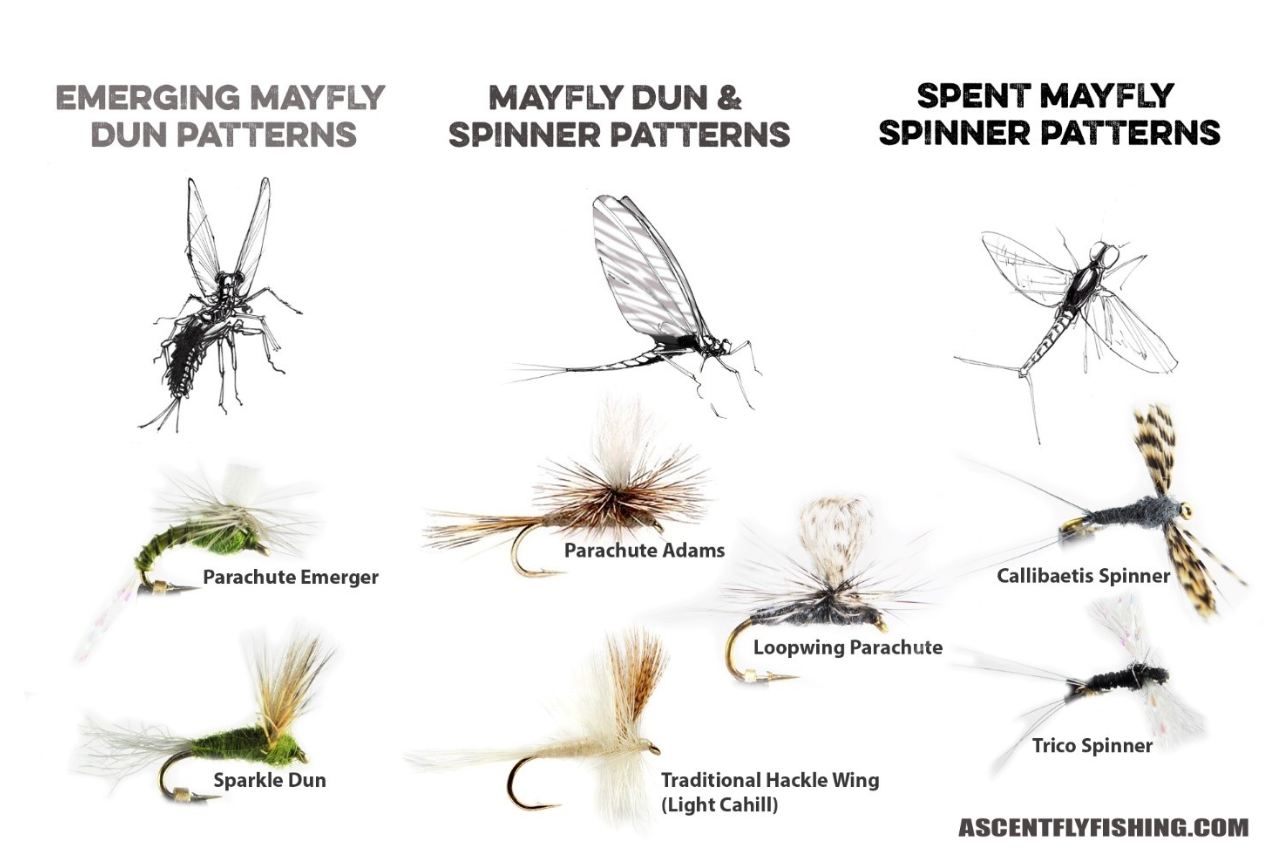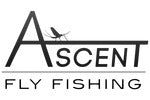
Go-To Fly Patterns for the Mayfly Menu: Part II – Duns & Spinners
Following up on our last article breaking down the mayfly hatch into Go-To fly patterns, we are leaving the nymph heavy breakfast and lunch menu (making up 80% of the mayfly meal), and move now into the dinner course comprised of mayfly duns and spinners represented by dry flies.

Ascent’s Go-To Mayfly Dun & Spinner Patterns
Although short-lived, the dun and spinner bite can be explosive and is without a doubt one of the most fun courses of the mayfly hatch to fish! The defining characteristic of the mayfly dun and spinner patterns are their long wings held perpendicular up off their backs like the spread canvas of a sail boat, and their long thin abdomens tipped with 2-3 hair-like tails. With those defining characteristics in mind, there are a few key types of dry mayfly patterns you will need you your fly box: 1. the Emerging Mayfly Dun transitional from nymph to adult at the surface of the water; 2. The fully emerged Live Adult Dun and Spinners on top of the water; and 3. The spawned out Spent Spinner floating dead on the surface of the water.

Ascent Go-To Emerging Mayfly Dun Patterns
This transitional stage from nymph to adult dun is overlooked by the vast majority of fly fishers and with it they are missing the chance at being a part of one of the hatches most explosive dry fly bites! The key characteristics of the transitional dry mayfly patterns is how low they sit in the surface of the water, a reduced, half-erect wing standing off of the back of the thorax, and a section of material tied off the back of the abdomen imitating the shuck (abandoned exoskeleton) of the nymph being left at the surface of the water. While tied in a number of different colors the main fly patterns to cover the emerging mayfly dun are the Parachute Emerger, and the Sparkle Dun. During an active hatch I’ll often tie on a fully emerged dry mayfly as my first fly, an emerging dun as my second fly, and an emerging mayfly nymph as my third fly!
Ascent’s Go-To Live Mayfly Dun & Spinner Patterns
The fully emerged mayfly duns and spinners sitting on top of the water are the most common dry mayfly patterns both in the shop and in most anglers’ fly boxes. Marked by their tall sailboat-like wings stretched high above their backs and their thin abdomens tipped with long thin tails. The number of mayfly dun and spinner patterns in the shop can overwhelm even the most seasoned fly fisher, and our hands down favorites are the Parachute patterns and the Traditional Hackle Wing pattern. When shopping for or looking for fly tying instructions for these two styles of mayflies the “Parachute” is usually followed the species the pattern is matching (ie. Parachute Blue Winged Olive), while a traditional hackle wing is typically specified with just the use of the species name without any additional adjectives (ie. “Blue Winged Olive” without any descriptors such at Thorax, Parachute, or Comparadun). The fully emerged, living Mayfly Dun and Spinner Patterns are the entrée of the dinner course so make sure your fly boxes are well stocked with these big beefy patterns!
Ascent’s Go-To Spent Mayfly Spinner Patterns
The pièce de resistance and final course of the meal is the spent mayfly spinners floating invitingly across the surface of the water after they’ve expire post courtship. In death, the wings that once stood so prominently above their backs, relax in death, and lay flat on the water on either side of the thorax like a pair of glassy airplane wings. This is the final point of high calorie concentration as the expired mayflies rain down on the surface of the water and are clumped together by the current of the river. Even the largest, most reclusive fish in the lake or river will invariably rise to feed on spent mayfly spinners! Typically listed on the fly shop bins simply as spinner following the name of the species its tied to imitate (ie. Trico Spinner or BWO Spinner), we would consider these must-have patterns for the fly fisher looking to stretch out the dry fly bite as long as possible!
With a healthy dose of Ascent’s Go-To Mayfly Dun and Spinner patterns rounding out your mayfly selection, you should be locked, loaded, and ready to take advantage of every phase of the hatch!
June FOM Pattern
Parachute Blue Winged Olive
Color: Olive
Size: 22

Depending on where you live, a number of different mayflies might share the name of Blue Winged Olive (BWO). However, it is the size 16-24 family of Baetis that is being referred to. With hundreds of patterns both dry and wet being tied to match this hatch, sometimes you just need one go-to pattern to produce results. The Parachute BWO is one such pattern. Buoyant, similar in profile and color to the natural mayfly, and tied in a number of sizes, the Parachute BWO can be used to effectively match the whole spectrum of mayfly species that share its name.
Dry/Wet: Dry
Fly Category: Generalist Pattern
Family: Mayflies
Species: Blue Winged Olive
Life Stage: Adult


